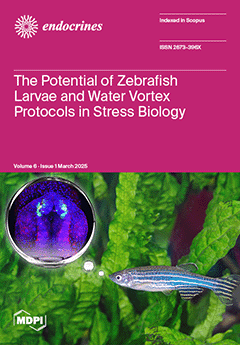Background: Type 2 Diabetes (T2D) is increasingly becoming a critical healthcare priority globally. Medical interventions are primary strategies for managing diabetes, but more recently, diet/nutrition therapy, including the use of functional food products such as cinnamon and/or cinnamon products, has garnered considerable attention.
[...] Read more.
Background: Type 2 Diabetes (T2D) is increasingly becoming a critical healthcare priority globally. Medical interventions are primary strategies for managing diabetes, but more recently, diet/nutrition therapy, including the use of functional food products such as cinnamon and/or cinnamon products, has garnered considerable attention. The focus of this systematic review and meta-analysis is to examine whether cinnamon improves blood glucose parameters, body mass index, and inflammatory markers in people with T2DM. Method: PRISMA and PICOS frameworks were used for the review. EBSCOhost was used to search for relevant literature in health science research databases, while EMBASE and reference lists were used to access other relevant articles. Results: For systematic review and meta-analysis, 14 and 12 studies, respectively, were included (five from Iran, two each from the USA and India, and one each from the UK, China, Germany, Portugal, and Iraq). All participants had T2DM with ages ranging from ≥30–65 years. The effect of cinnamon on glycaemic control and other parameters did not follow a regular pattern. Effect on HbA1c (nine studies and 605 participants; MD of −0.07 (95% CI, −0.13, −0.01,
p = 0.02), postprandial blood glucose (PBG) and BMI showed significant (
p < 0.05) reductions. However, cinnamon exhibited no significant (
p > 0.05) impact on FBG (MD of −1.73 (95% CI, −3.98, 0.52,
p = 0.13), CRP, TNF-α, and IL-6 in people with T2D; neither did the sensitivity test reveal any change in relation to these parameters. Conclusions: Cinnamon or cinnamon extracts/products are significantly effective in diabetes management through reduction in HbA1c, PBG, and BMI.
Full article




